Top Five Learnings from Ragan Disney
Written By: Deanna Tomaselli
On March 6-8, 2019, I attended the Social Media Conference for PR, Marketing and Corporate Communications at Disney World, presented by Ragan Communications. Over three days of engaging sessions, we learned what’s next in social for communicators. Not to mention, we got to party at Disney’s Yacht Club beach with the man himself, Mickey Mouse! The following are my top five learnings.
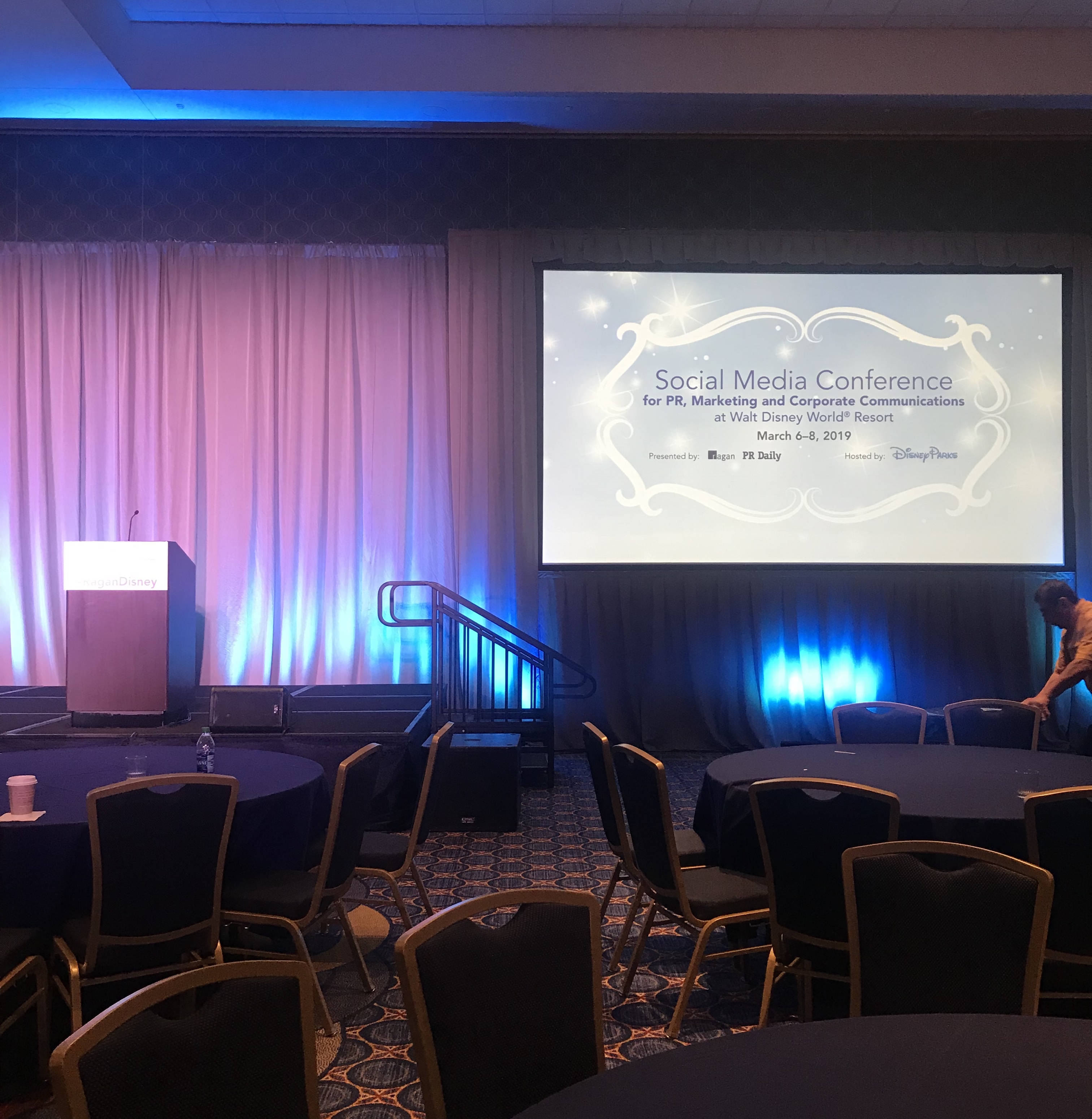
One: Content is Everything
As my colleagues at Red Agency in Australia say, social media should never be a side dish; it’s a staple ingredient. Especially today with more competition than ever in the newsfeed.
Each session at Ragan Disney had one common theme: Make amazing content. Tell stories. And make those stories human-centric and appealing. Oh and for the sake of our newsfeeds, only post when you have something worthwhile to show or tell.
Speaking of show, video content reigned supreme. According to Brenden Lee from Twitter, there are 1.2 billion total global video views on Twitter each and every day, and 87 percent of marketers have a positive ROI with digital video. A few of his best practices using video:
- Be short: 15 seconds or less
- What’s your hook? Including a story arc means video is 58 percent more likely to be viewed
- Speak without sound: Captioning your video will drive views and completion
- Feature people early on – people like to see people
- Be topical – talk about things that are happening
Two: It’s all about your audience (it’s never been about you)
My favorite way to simplify social media is the cocktail party example. You wouldn’t go to a party and start shouting about yourself to the people there. They’d probably have you escorted out. Rather, you talk with other guests. You know what they say, people love to talk about themselves.
Jimmy Bennett from Wendy’s stole the show as keynote speaker and something he said really resonated: “What is my social purpose?” should not be the right first question to ask. The question should be, “Why are consumers on this platform? And what do they want to get out of social media?”
Gone are the days of “positive, negative or neutral” sentiment to posts. Software is getting smarter and we should really be actively listening to what people are saying. And not just about our brands. The Wendy’s team meet weekly to discuss memes and trends, what they are talking about, what other brands are talking about, and what people in general are talking about. And instead of a blanketed corporate social response, if you can have a little fun, click over to a person’s social channel to see their interests before responding to them as your brand. Nate Sandell’s Mall of America team does this too and their audience truly feels valued after the brand takes a few seconds to make their answer personalized. A little goes a long way.
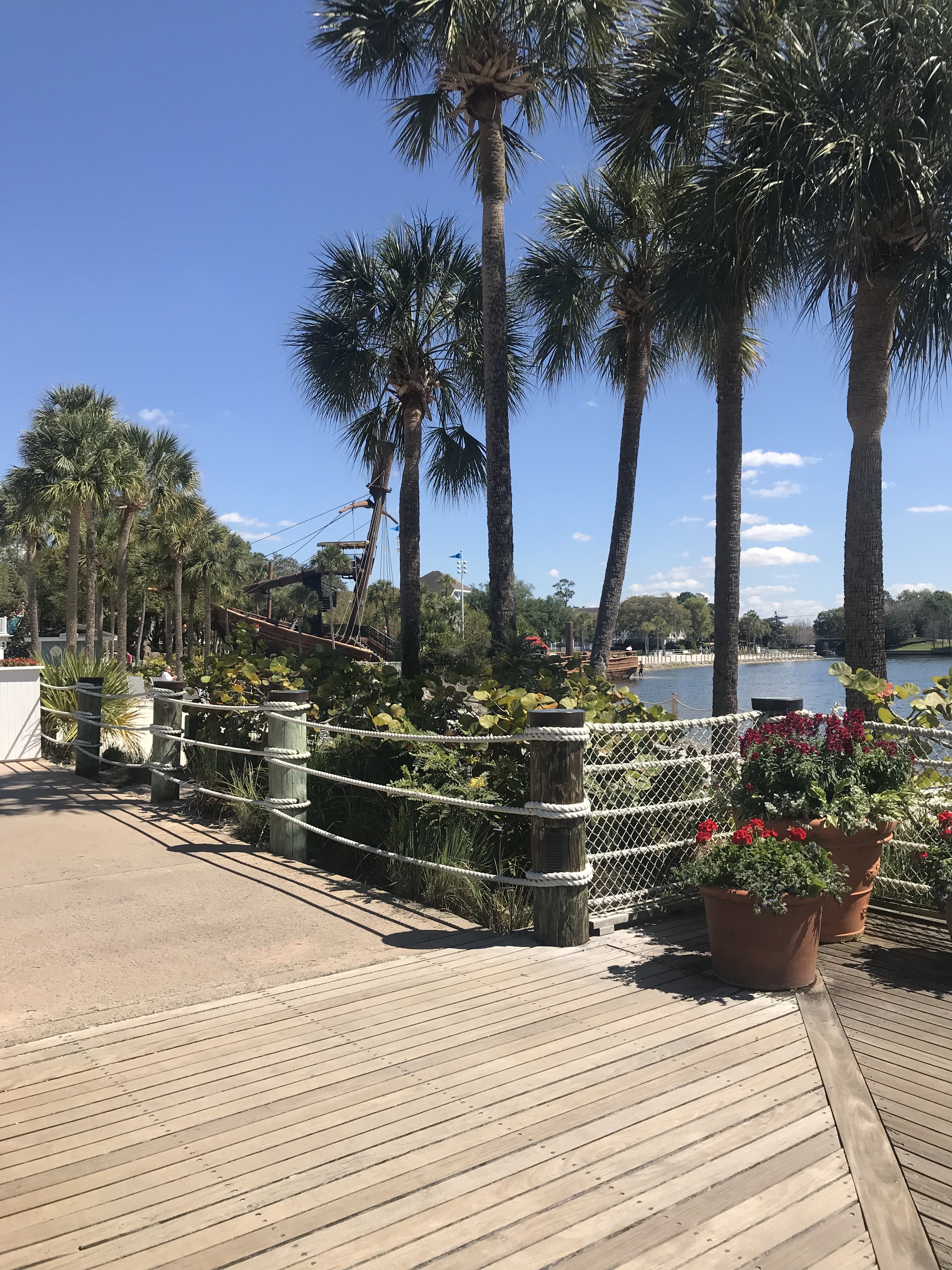
Three: It’s (still) all about a good pitch
No matter the changing technology and evolving social channels, for PR pros, a good pitch is still a good pitch.
Natan Edelsburg from Muckrack suggested to rethink your press release by adding video to your pitch. (There’s video again!) Here are four reasons why to create a 30-second video pitch:
- TL;DR: Offer the reporter an option to skip text and watch video
- Incorporate a visual version of your pitch
- Contains a CTA and encourages the reporter to keep reading your email
- It hits multiple senses
As a daily Good Morning America viewer, I was also excited to see Terry Hurlbutt, VP of digital, give her two-cents when it comes to pitching. She suggests you ask yourself, “Why should a regular person care?” before pitching her team. Then answer how you are going to 1) teach their audience something new and/or 2) give them a tip. For GMA (and other consumer broadcast outlets), if you can positively impact a wide, consumer audience and make the journalist’s job easy, then you’ve delivered a solid pitch.
Four: Invasion of the Influencers
It’s no surprise that influencers came up in just about every session. But Matt Silverman from the Daily Dot said something interesting: influencers have “parasocial” relationships – it’s a psychological term that audiences feel like they “know” creators on a personal level, and that breeds extreme loyalty. I’m guilty of it as a consumer. I follow some influencers that I feel like I’ve gotten to “know” over the years and I genuinely trust what they say. I’m no dummy and know when things are sponsored, but I also know when they are being genuine. But even they are getting oversaturated with their #sponsored after #sponsored post. Enter: micro and nanoinfluencers.
Microinfluencers, with smaller audience bases, and nanoinfluencers, with as little as 1,000 followers, are gaining popularity. According to a New York Times article from last fall, “their lack of fame is one of the qualities that make them approachable” and “their word seems as genuine as advice from a friend.” When I speak with my clients about influencers, they usually ask if we are going to pay them. From speakers at Ragan Disney, everyone agreed to work with a variety of influencers – from mega to nano, paid and unpaid, depending on your budget. This way, you can track lead quality to see what’s working and what’s not. And always disclose when it’s sponsored. After all, you don’t want to get “Fyred.”
Five: Data, data, data
Not surprisingly, data was a commonality at Ragan Disney. Besides Wendy’s, my other favorite session was actually from one of Ragan Disney’s sponsors: TrendKite. Sarah Parker spoke, and she noted that data can (and should) inform your entire strategy. This includes owned media analysis and social listening, brand monitoring, campaign tracking, industry keywords, crisis management and research.
How can you measure your social content success?
- Mentions: Top-level brand awareness
- Share of voice: Competitive and industry benchmarking
- Reach: Audience size
- Engagement: Message interest
- Amplification: Message spread
- Conversions: Action
How do you not measure your success? Followers. They are a vanity metric and basically mean nothing. It’s 2019, not 2009, people!
What is still true today as it was in 2009 though, is that social is what you make of it. Staying on top of trends, putting out meaningful content, interacting with your audience and constantly evaluating the results (and tweaking your plan based on those results) will get you far in 2009, 2019, 2029 and beyond. And just because you can, doesn’t mean you should.
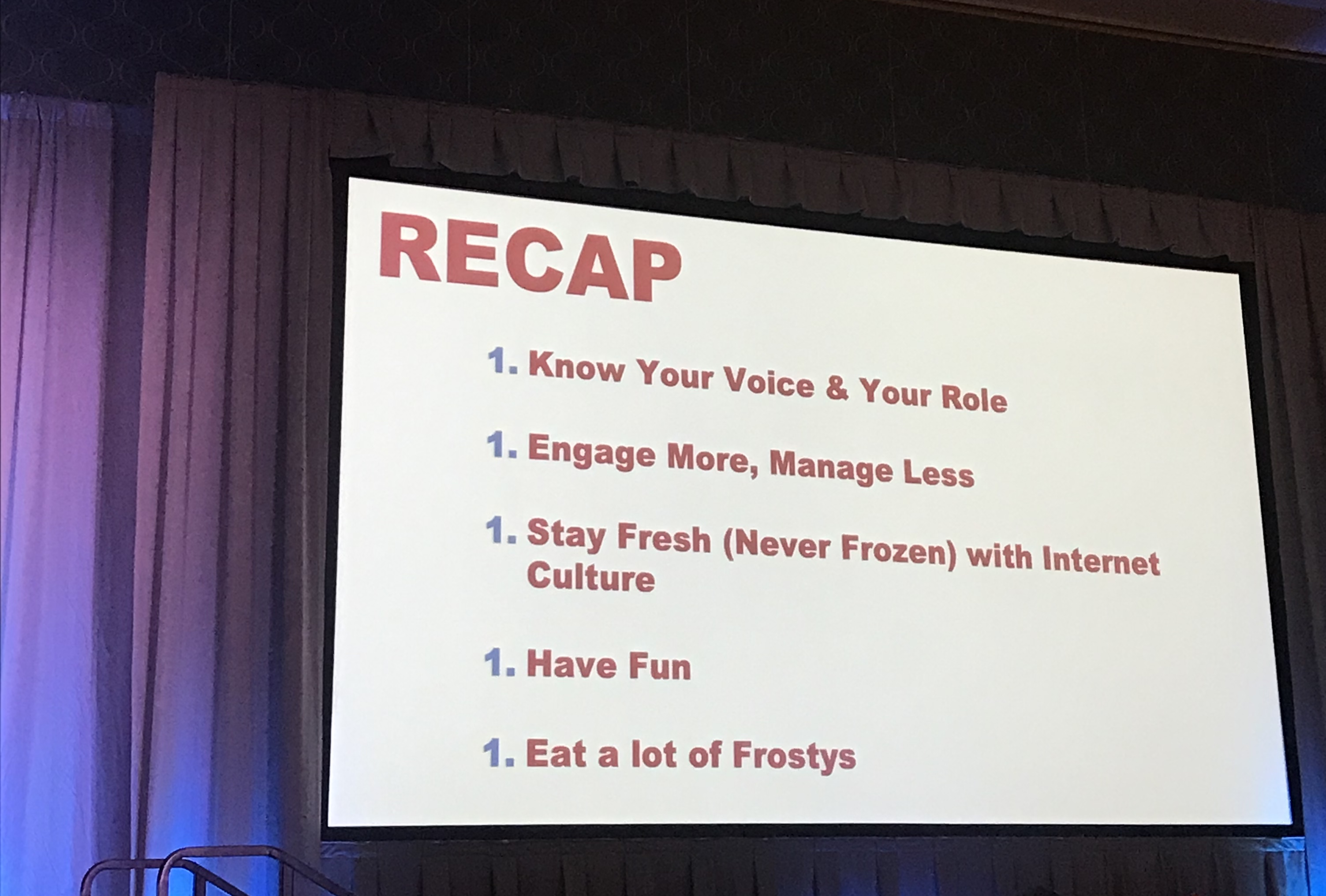
Check out more conference highlights on Twitter and under the Instagram highlight “Guest Takeovers.”
Deanna Tomaselli
Deanna Tomaselli is an account supervisor at Havas PR and an active member of the PRSA Pittsburgh board. She shares industry insights, career learnings, and life in the ‘burgh at PRettyinPgh.com.
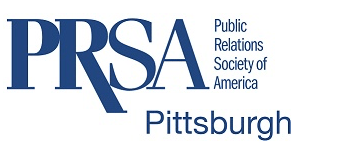
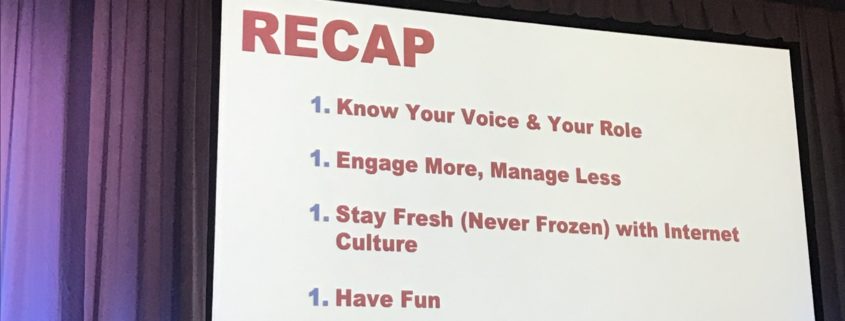



Trackbacks & Pingbacks
[…] now on behalf of Women’s History Month over on my company’s blog. Then, I shared my top learnings from the Ragan Disney social media conference on PRSA Pittsburgh. And in case you missed it, I also shared more in-depth about my favorite […]
Leave a Reply
Want to join the discussion?Feel free to contribute!